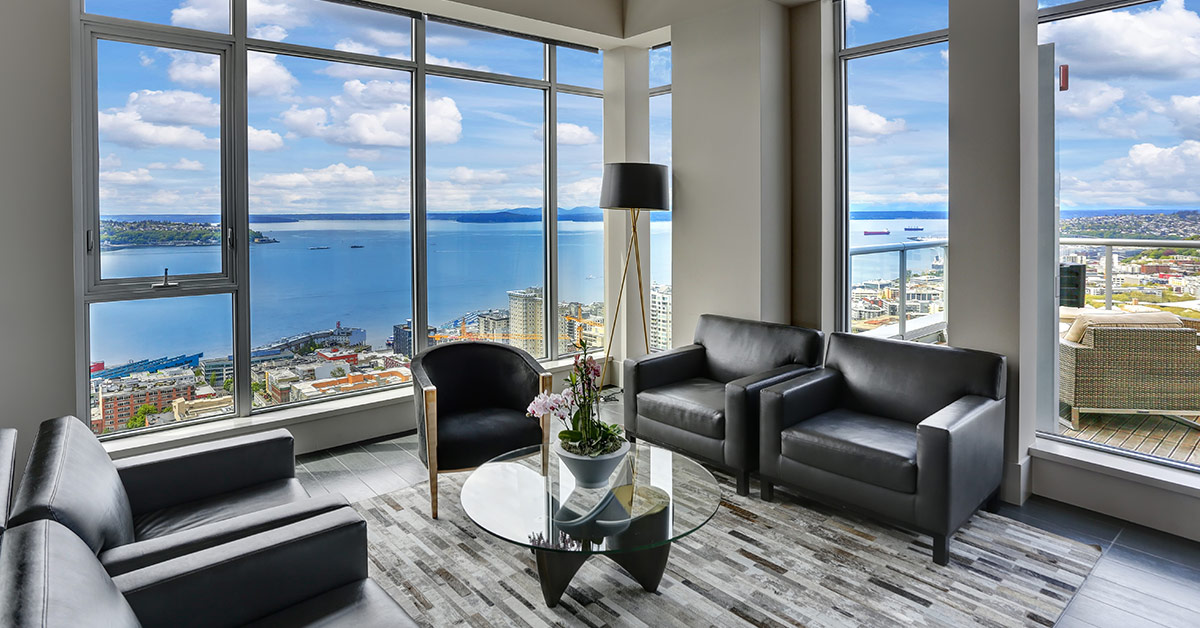Depending on your location, the definition of a “luxury home” tends to vary quite a bit, even when comparing neighboring communities. In cities such as San Francisco, San Jose and Seattle, these homes are typically sold for $2 million or more, while in Detroit, Indianapolis or St. Louis, they might sell for one-third as much.
According to Redfin, sales of so-called luxury homes (those priced in the top 5% of their respective markets) were up more than 60% on a year-over-year basis during the three-month period ending this past November. Redfin divided U.S. homes into five buckets. It found that sales growth for the top tier of the market was about four times higher than that of midpriced homes and nearly 15 times higher than that of the lowest-priced tier.
Redfin’s report analyzed the 50 most populous U.S. metro areas, excluding New York City. Among the metros with the highest annualized sales growth for these luxury properties was San Antonio, where closings jumped by 82% — the third-highest pace in the nation behind Newark, New Jersey, and West Palm Beach, Florida. Relative affordability may have helped San Antonio as it ranked among the bottom 10 markets with a median sales price of $676,000 for these luxury homes.
Everyone has seen their dollar go further with interest rates being lower, so people who before were out of that [luxury-home] range are now in that range.
Dean Aitken, Realtor and team leader, Keller Williams
Two overriding factors may be driving this growth. First, San Antonio is a hot destination, ranking No. 3 nationally in 2019 among cities with the most one-way moving-truck arrivals, according to U-Haul. Second, for-sale inventory has reached historically low levels across the metro area, with the San Antonio Board of Realtors reporting two months of supply at the current sales pace as of November 2020.
Homes at all price points are flying off the market, according to Dean Aitken, a Realtor and team leader for Keller Williams in San Antonio. He says his team sold 27% more homes in 2020 compared to 2019. This past January, he listed a home for $685,000 and received five calls about it on the same day before anyone had viewed it.
“It’s all about inventory and there just isn’t any,” Aitken says. “The builders didn’t keep up with the demand and so they’re way behind on what they’re building. … And everyone has seen their dollar go further with interest rates being lower, so people who before were out of that [luxury-home] range are now in that range.”
San Antonio also has a high concentration of military personnel who often seek out high-end properties, Aitken says. In Texas, veterans with a 100% disability rating don’t pay property taxes, which are excessively high in San Antonio by some accounts. These types of buyers may be able to purchase a more expensive home by rolling tens of thousands of dollars per year in tax savings into a larger mortgage.
“You wouldn’t normally say, ‘Let’s go retire to a place with heavy property taxes,’ but if you’ve got 100% disability, that’s no longer an issue,” Aitken says.
“We’re a major place for military folks to retire, particularly high-end colonels and generals. The joke is, there’s a general on every corner in San Antonio.”
Data isn’t always supported by boots-on-the-ground observations. Take Riverside, California, as an example. Redfin reported that Riverside’s luxury-home market, with a median sales price of $1 million, saw tremendous growth this past fall. Among the 49 U.S. metro areas analyzed, Riverside — located an hour’s drive east of downtown Los Angeles — ranked No. 4 with year-over-year luxury-sales growth of 81% and No. 10 with annualized price growth of 9.9%.
But the real growth in Riverside and the surrounding Inland Empire region — which is forecast to be one of the nation’s 10 most populous metros by 2046 — is in the midpriced home segment below $1 million and above the local conforming loan limit of $548,250, says Mark Hossler, founder and president of Riverside-based Secure Choice Lending. “Personally, I don’t see a huge influx of luxury homes in River-side at that ($1 million) price point yet,” Hossler says.
He notes that nearby communities such as Temecula, Lake Elsinore and Corona are growing in popularity with homebuyers who are seeking affordability while commuting to jobs in Riverside, Los Angeles or San Diego. This is helping to drive demand for jumbo loans, which had fallen in the wake of the COVID-19 outbreak.
“There’s a high demand for them,” Hossler says. “We still see tight guidelines. The [lender] appetite isn’t all the way there, but you can tell the difference between three months ago to now. You can 100% tell the difference between six months ago and now.”
Much has been written about the mass migrations out of major cities such as Los Angeles and San Francisco. Whether these trends are truly severe or long lasting is up for debate, but areas such as Riverside stand to grow as a result. Hossler has observed a pandemic-induced “mind change” among former big-city high-rise dwellers with high mortgage payments.
“You get the benefits of those locations and a much smaller home price with much more land,” he says. “Here in Riverside, you can buy a quarter of an acre to half an acre, and it can still be a $550,000 to $600,000 price point, whereas in L.A., that’s not even fathomable.” ●





